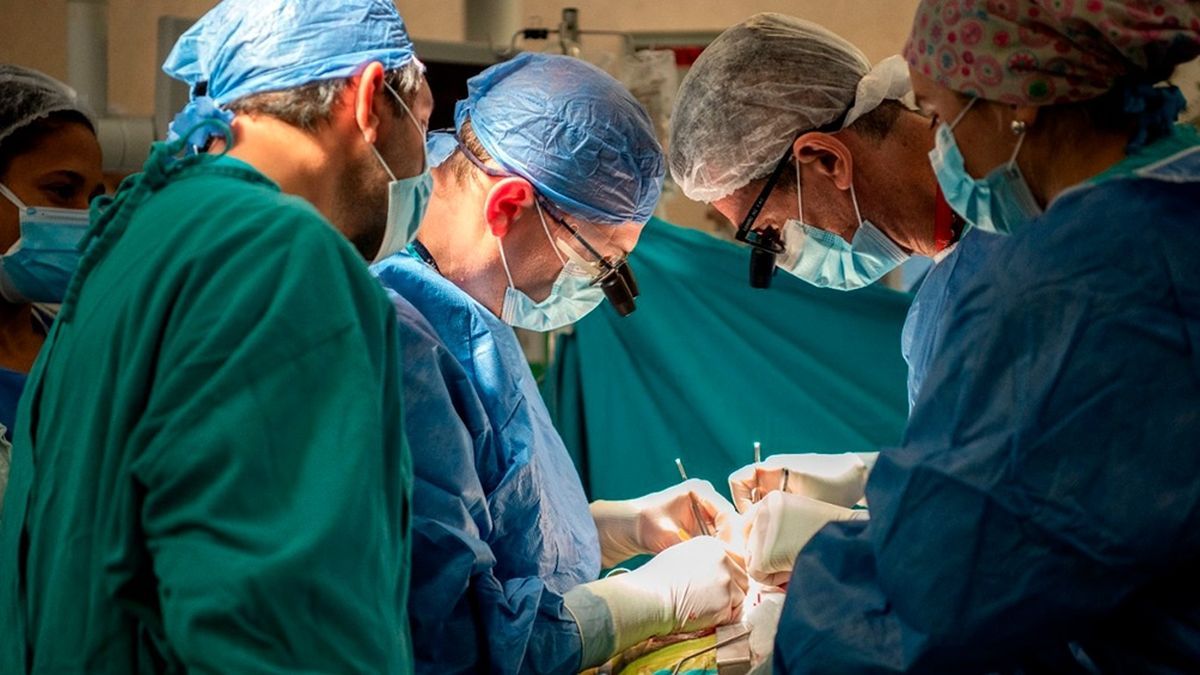He National Central Single Ablation and Implant Coordinating Institute (INCUCAI) reported that in 2024, 4,263 transplants in Argentina, 2,156 corresponding to people who received an organ and 2,107 to people who received a cornea.
According to data provided by INCUCAI, 4,263 patients who were on the waiting list were transplanted last year thanks to the completion of 1,972 donation processes, representing growth compared to the 2023 donation rate, reaching an average of 17.7 organ donors per million inhabitants. In addition, 1,307 bone marrow transplants were also performed.
Specifically, the organization indicated that 308 transplants were performed in pediatric patients (206 organs and 102 corneas).
Among organ transplants, 1,515 kidney transplants were performed (1,281 with a deceased donor and 234 with a living donor); 462 liver (414 with a deceased donor and 48 with a living donor); 95 cardiac; 33 renopancreatic; 24 lungs; 14 hepatorenal; 8 cardiorenal; 3 hepatointestinal; 1 cardiopulmonary; and 1 pancreatic.
Which provinces topped the ranking of organ donation in 2024
The rate of Organ Donors per Million Inhabitants (DPMH) at the national level was 17.7 donors per million inhabitants.
The provinces that recorded the highest rates were Neuquen (41.6 DPMH), Tucuman (34.9 DPMH), Autonomous City of Buenos Aires (28.2 DPMH), Currents (25 DPMH), Santa Fe (20.3 DPMH), Jujuy (19.9 DPMH), Rioja (19.3 DPMH), Cordova (18.4 DPMH), Mendoza (18.3 DPMH) and Saint Louis (16.8 DPMH). On the other hand, it is also important to highlight that the national rate of tissue donors was 24 DPMH, the highest in the history of our country.
As part of the work carried out by INCUCAI, the launch of the National Immunogenetics Laboratory to carry out high-resolution histocompatibility studies is also highlighted. Its implementation optimized the registration of donors and bone marrow transplants, allowing the country to be self-sufficient in this type of studies.
organ-transplant.jpg
Neuquén was the province that registered the highest rate of organ donors.
Among the strategies to increase the availability of organs and tissues for transplant, the work of the Procurar Program stands out. Through the creation of Hospital Organ and Tissue Procurement Units (UHPROT), this program promotes an intra-hospital model that allows healthcare establishments to be involved in the detection, selection and treatment of potential donors.
In 2024 they were installed 12 new Hospital Units in public and private hospitals, totaling 28 units in different provinces. Likewise, in order to promote the detection, staging, registration and comprehensive care of people with Advanced Chronic Kidney Disease (ACKD), 15 clinics were installed in hospitals throughout the country, within the framework of the Comprehensive Approach Program for the Registry of Advanced Chronic Kidney Disease (ERCA).
Greater technology
Within the framework of the National Renal Perfusion Program, six hypothermic perfusion machines were incorporated into hospitals with the objective of optimizing the evaluation, preservation and recovery of kidneys destined for transplant. The use of this technology allowed 75 transplants to be performed with perfused kidneys during 2024.
Likewise, 36 non-asystole donation processes were carried out, a procedure that allows obtaining organs for transplant from donors whose death occurred due to cardiac arrest. These procedures made it possible to perform 57 kidney transplants, 2 liver transplants, 1 hepatorenal transplant, and 32 corneal transplants.
Finally, it is important to mention that, so far this new year, two kidney transplants have already been performed on patients who were on the waiting list in the provinces of Tierra del Fuego and Santa Cruz. ANDThis has been possible thanks to the donation of organs by society and the intervention of health professionals from hospital establishments throughout the country.
Source: Ambito
David William is a talented author who has made a name for himself in the world of writing. He is a professional author who writes on a wide range of topics, from general interest to opinion news. David is currently working as a writer at 24 hours worlds where he brings his unique perspective and in-depth research to his articles, making them both informative and engaging.




